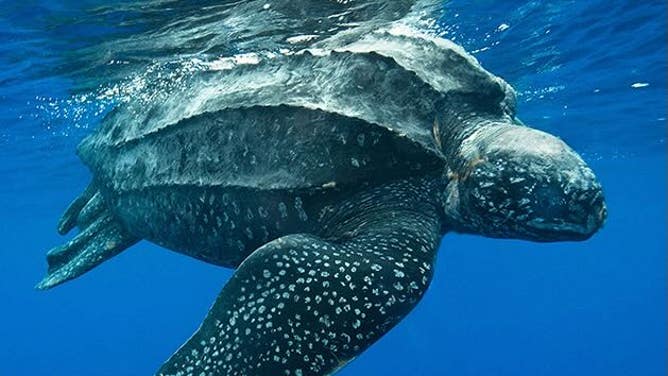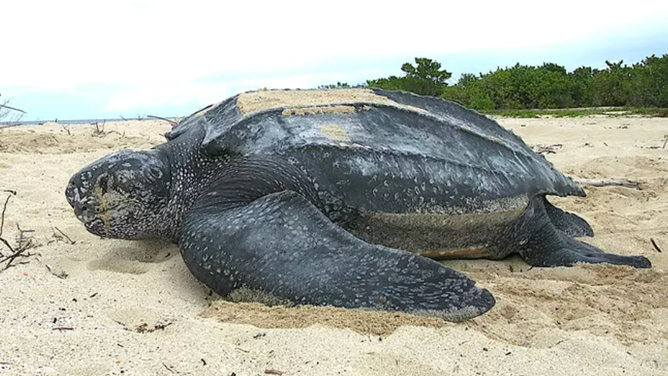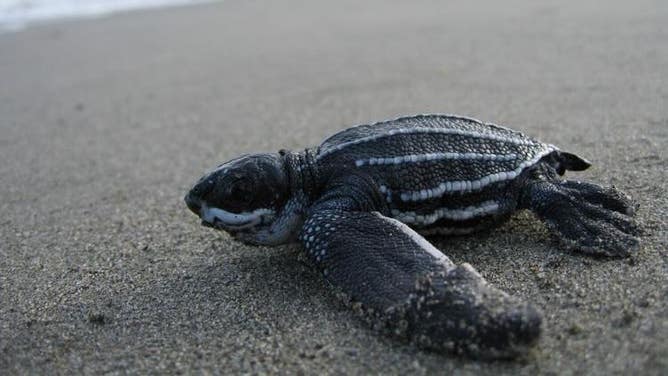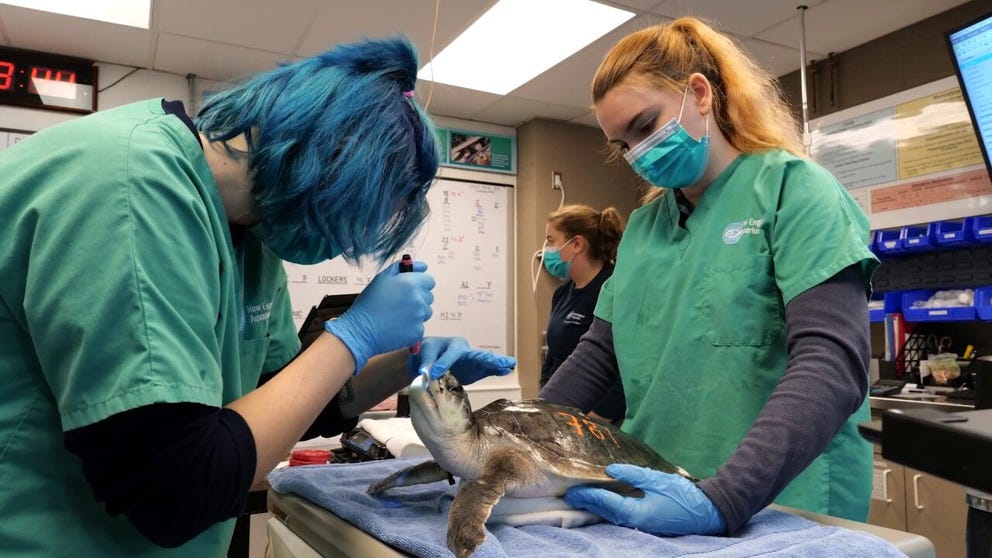World’s largest turtles found to forage in new spots along eastern US
Scientists used satellite transmitters to track groups of leatherback turtles for several years. The research revealed the favorite foraging spots of the endangered animals.
Cold-stunned sea turtles receiving life-saving care at the New England Aquarium
File: More than 500 sea turtles have been rescued from the frigid waters of Cape Cod Bay, and dozens of those will receive life-saving care at the New England Aquarium before being returned to the water.
Scientists announced Tuesday that leatherback turtles have been found to migrate and forage in key hotspots between southern New England and Florida.
This discovery will open new opportunities for future research on the turtles, target the research in the new locales and help inform efforts to protect the endangered species in those areas, researchers said.
The areas are located in three regions, according to Mitchell Rider, a postdoctoral researcher at the University of Miami.

Leatherback sea turtle swimming just below the ocean surface.
(NOAA Fisheries / NOAA)
One is the coastal region known as the South Atlantic Bight, which stretches from the upper Florida Keys up to North Carolina. Another is the Mid-Atlantic Bight, spanning the region from North Carolina up to Massachusetts. The third region is southern New England.
TRAPPED TURTLES: QUICK ACTION BY NEW ENGLAND FISHERMEN CAN HELP SAVE TANGLED LEATHERBACKS
Rider noted that the Mid-Atlantic Bight may be a significant foraging ground for the turtles.
Scientists discovered these hotspots by placing satellite transmitters onto two groups of leatherback turtles. One group was tagged near Massachusetts in the summer, and the second was tagged off the North Carolina coast in the spring, according to researchers.
They found that the turtles made significant use of one particular region.

A nesting leatherback sea turtle.
(Claudia Lombard / U.S. Fish and Wildlife Service / FOX Weather)
"The high use of the (Mid-Atlantic Bight) by both groups of leatherbacks is the most important finding of our study," Rider said. "High use was mostly characterized by inferred foraging behavior."
"To date, several studies have tracked leatherbacks into this region, but we are the first to take that a step further and characterize the behaviors associated with their movement patterns," he added.
SEAWORLD SUCCESSFULLY RETURNS 10 ENDANGERED SEA TURTLES BACK TO THE OCEAN
Researchers said they were also able to identify secondary foraging- and over-wintering areas along the continental shelf by tracking the group tagged near Massachusetts.

A baby leatherback sea turtle.
(NOAA / NOAA)
Tracking the group tagged near North Carolina gave researchers a chance to learn about the turtles’ movement along migratory routes, while pinpointing foraging areas.
According to researchers, they tracked 52 leatherbacks between 15 and 302 days from 2017-2022.
Leatherbacks are the largest turtles on the planet, weighing between 550 and 2,000 pounds and growing up to 6 feet long, according to the National Oceanic and Atmospheric Administration.
